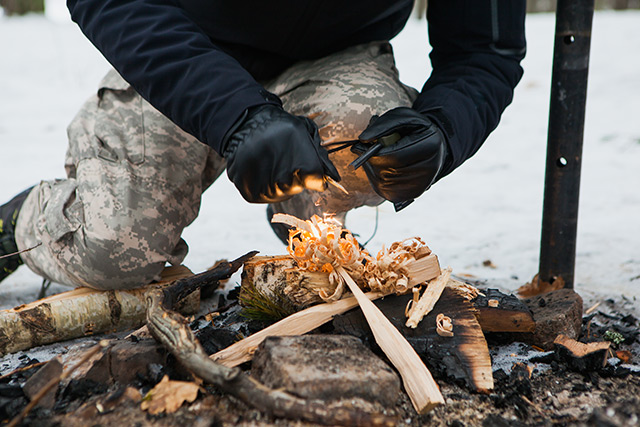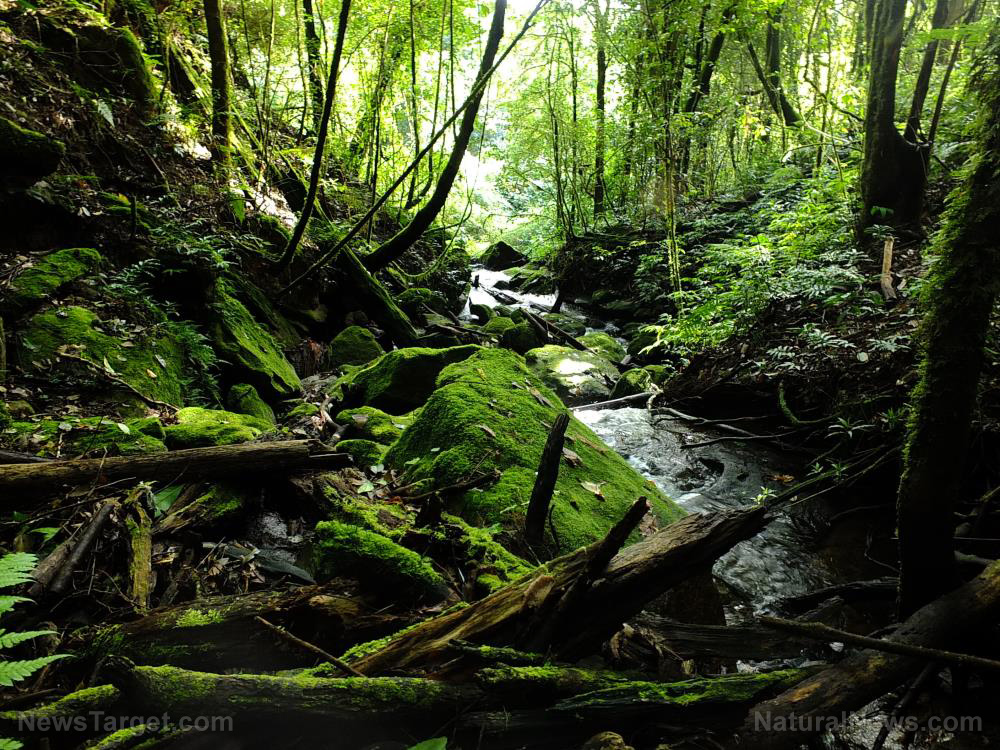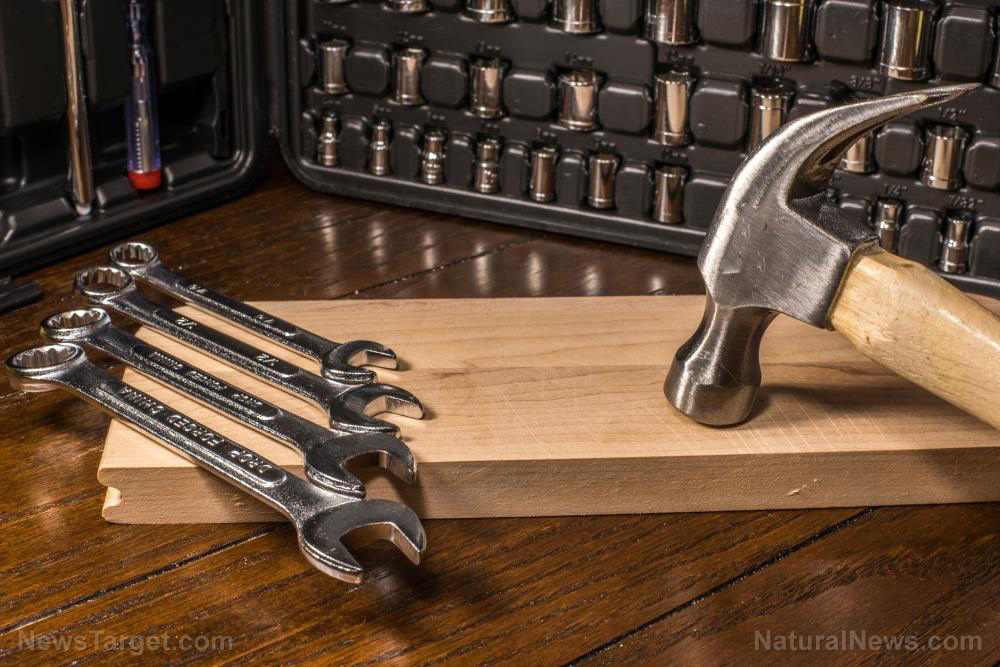Surviving an avalanche: Basic tips for what to expect, what to do
06/06/2018 / By Zoey Sky

Avalanches pose a great risk to winter hikers, and while they are a part of your winter wilderness experience, you need to prepare for them. This applies not just to skiers or hikers, but also to drivers traveling through mountain roads. (h/t to DoomandBloom.net)
An avalanche may be caused by “simple gravity, a major snowfall, seismic tremors, or human activity.” Its speed and force often depend on whether the snow is “wet” or “dry powder.”
Powder snow avalanches may reach “speeds of 190 miles per hour,” while wet slides travel slower. However, wet snow avalanches come with “a great deal of force” because the snowpack is denser (Related: Hypothermia survival advice that can save your life in a winter emergency.)
Contrary to popular belief, the main cause of avalanche-related casualties isn’t freezing to death. They include:
- Suffocation – Being buried in snow may cause asphyxiation or suffocation. Densely packed snow is as heavy as concrete. Victims may even be immobilized and unable to dig themselves out of heavy snow.
- Trauma – Debris (e.g., branches, rocks, and even entire trees) may be carried along the cascade of snow. This, along with the weight of the snow, can cause “life-ending traumatic wounds.”
These factors may decide whether or not you survive an avalanche:
- Availability of rescue equipment at the scene
- The presence of air pockets for breathing (or the lack of them)
- Snowpack density
- Traumatic injuries sustained
- Your position when trapped in snow (You could be disoriented if you’re not upright)
Avalanche survival basics and equipment list
Before you go on a trip, prepare your gear. Wear warm clothing, and if you’re hiking in January, pack the following items:
- A cell phone
- Food
- Heat packs
- Spare dry clothing
- Water
Go with a group if you’re planning an expedition to areas prone to avalanches. Pay attention to your position when traveling in a group, and make sure that you’re all spaced out enough, so the group’s weight is evenly distributed.
Should a member of your party get buried in the snow, act quickly and dig them out. You’ll also need the following specialized gear:
- An avalanche beacon – This device emits a pulsed radio signal, and each member of your group must carry one. If someone gets buried in an avalanche, the others can still pick up the signal from beneath the snow. Receivers can interpret the signal via a display in the device to make the search easier.
- An avalanche shovel – Lightweight short aluminum shovels will fit inside your backpack, and you can use the shovels to remove snow and debris over a buried hiker. These shovels often come with telescoping shafts and D-shaped grips that you can use while wearing mittens.
- An avalanche probe – This is a stick that will help you determine “the exact location of an avalanche victim.” The probe will measure how far down they are.
- A helmet – Head trauma causes most fatalities due to “rocks and debris flung around by the snow.”
- Skier’s airbags – These brightly colored airbags auto-inflate with a trigger. They work like a life jacket, and they will keep you buoyant so you’ll be easier to find.
- Snow saw – This saw is used for snow stability tests. You can also use them to make snow shelters.
Surviving an avalanche
Be careful in areas that are prone to snow slides – victims trigger at least 83 percent of avalanches. Here’s what you need to do to survive an avalanche:
- Yell – Let your group know that you need help. Once the avalanche starts, “wave your arms and shout as loud as you can” so it’ll be easier to find you.
- Move – If you triggered the avalanche, keep an eye out for “a crevice forming in the snow.” Try to jump uphill of it as fast as you can to avoid getting carried off. If this isn’t possible, run sideways to avoid the center of the avalanche where the snow will be moving the “fastest and with the most force.”
- Get rid of excess weight – You’ll sink faster if you’re heavier, so dump unnecessary and heavy equipment. This will make it easier to reach the surface. You can also leave a glove or hat behind so you’ll be easier to spot, and you must deploy your avalanche airbag.
- Hold on to a tree/rock – With a smaller avalanche, you can anchor yourself using an immobile object like a tree or rock. For larger avalanches, trees may not be safe anchors since the force of the snowslide might uproot them.
- “Swim” – When buried in snow, pretend that you’re swimming the backstroke: Increase surface area by spreading your legs (with feet downhill) and raising your hands. From this position, swing your arms and try to stay on your back since it’s easier to breathe if you’re face-up.
If all else fails and you’re buried in the snow, you have about 15-30 minutes before you suffocate. While snow is porous, warm breath melts snow, which will refreeze as solid ice. This can make it harder to breathe.
- When the snow slows down – The size of the air pocket determines how long you can stay safe. If the snowslide stops, put one arm in front of your face and form a space that “will give you the most air. ” If you can, raise the other arm straight up toward the avalanche surface. Rescuers might see your gloved hand. Inhale deeply to expand your chest, so you have more room to breathe after the snow settles.
- If you get buried – If the snowpack is dense and you’re unable to move, stay calm. Panicking will use up your oxygen. If you’re disoriented, spit. The spittle will fall towards the ground because of gravity. Try to move and make a bigger air pocket near the surface.
An avalanche can happen in the blink of an eye, but with some quick thinking, you might just survive one.
You can read more articles about how you can stay safe when SHTF at Preparedness.news.
Sources include:
Tagged Under: avalanche, disaster, how to, multipurpose survival tools, preparedness, prepper, prepping, Safety Tips, survival, survival skills, survival tools, survivalist, winter emergency




















